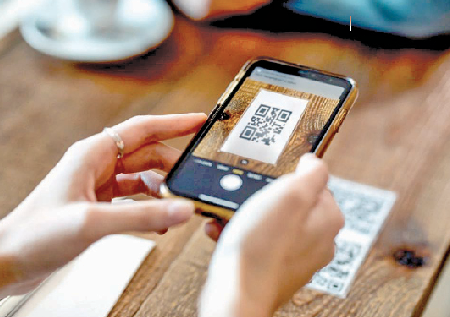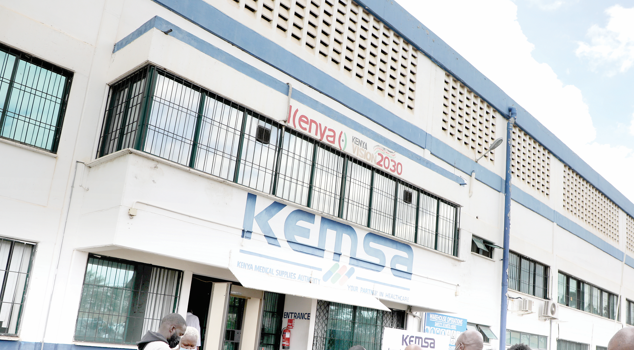The vital role of traceability technology

Traceability of goods across the world is an uphill task. Without proper mechanism, goods are subject to counterfeiting. That’s a gap that barcoding technology is filling. However, little is known about the technology and its role in the supply chain. How is a barcode made? What information does it contain? What are its roles in agriculture, trade, transport and logistics and in healthcare?
The first barcode was scanned in 1974 in the US. In Kenya, barcode technology has been there since 1999. A barcode is made up of bars and spaces that represent numbers. It captures the product’s country of origin, product description, number of products and a security feature.
“A barcode is a 13-digit number. The first three digits represent the country code, which reflects the country to which the product comes from, (for Kenya it’s 616). The next set of four digits shows the product description. The next five numbers are the product code. The code can take a huge number of products using that code and finally, the last number, which is very key is a check-digit, which is a security feature calculated from the other 12 sets of numbers,” says GS1 Kenya technical service manager Pascal Kasimu.
How it works
The technology ring-fences the linear barcode that is used at the point of sale and a Quick Response (QR) code that is mainly used by manufacturers for marketing. Another digital link has a feature called resolvers and gives more information about the product and can also be used at the point of sale.
In pharmaceuticals, a data synchronisation network is used to share information about medicine and, therefore eases traceability.
GS1 Kenya CEO Peter Otieno explains: “In pharmaceuticals we use a data matrix that captures a lot of information including the type of medicine, the manufacturer and the country of origin. This information is shared globally in a system called Global Data Synchronisation Network.”
Kasimu adds that every patient needs to know the type of medicine he is administered. “Everyone needs to know what goes into your body if you are sick. So, traceability enables you to do so all the way from the source. Electronic data interchange enables traceability to work,” he says.
Information emaciation
Shoplifting runs rampant in retail stores, which brings losses to retailers. Otieno says barcodes enable retailers to detect if shoplifting has occurred, a thing that is difficult to trace manually. Managing stock is also an issue, which barcodes solves.
“It all starts at the retail. There are many suppliers that supply several products that come in different sizes and often on daily basis. This becomes problematic to manage. You might also have an arrangement with the suppliers that you will pay them once goods are sold then it becomes difficult to know whose goods have been sold,” he says.
He continues, “Some people don’t have ethics. They shoplift and you might not know. This system (barcodes) was created to uniquely identify products even if they look alike. The products are simply identified by scanning. It helps in managing stock and tracing products.”
Exportation of agricultural produce has recently been facing challenges due to unavailability of tracing mechanism and concrete information about the product. Kasimu explains that the whole process of rearing and slaughtering of animals for export has to be documented in order to meet all the traceability standards.
“If you consume meat, you need to know where the meat comes from. The whole process has to be captured using GS1 standards. For traceability, we deal with facts and to avoid any wrong information, we go to the farm to capture and document everything. Information should be documented every day and that way, history of the animal or the crops is captured,” he says.
In logistics, barcoding technology plays a vital role of ensuring all the goods in transit are safe and any attempt to counterfeit is detected at delivery point. And with the advent of online shopping, barcodes act as security that enables buyers or importers to know if their goods are original or it’s been replaced. This is possible by creating “digital twins” of the physical products.
“Nowadays, we buy products online, but you are not sure of getting the right product. To solve this problem, we develop the ‘digital twin’ of products. So, the manufacturer creates a code and takes the images of the product as it is, so when you put in the internet the code it could never be changed or used by someone else. That’s how we help in logistics; to transfer goods from one region to another using GS1 traceability system,” says Otieno.
The challenges
GS1 Kenya is an affiliate of GS1 Global, a not-for-profit association that is available in over 100 countries. Otieno reveals that acceptance is the biggest challenge affecting the company. He says they are hoping to work with the government in solving transport and logistic problems.
“Acceptance as a challenge comes in because most retailers are not real owners and this system curtails theft. It has taken time for people to understand and embrace this technology. We are working hard to ensure the government accepts and see the benefit of having this technology be promoted at the policy level, so that corporations such as the Kenya Medical Supplies Authority and Kenya Revenue Authority could embrace it,” he says in conclusion.











